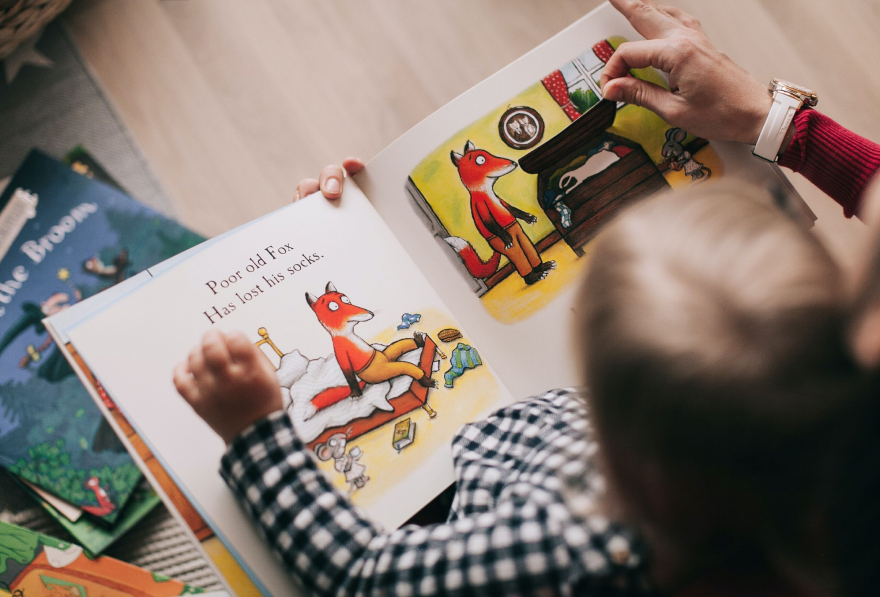If your child has difficulty communicating with others, it is usually due to a delay in speech or language, or sometimes both. So what is the difference?
Speech
Speech, also called articulation, is how words are pronounced. Children acquire sounds in a particular order. They also present with difficulties with speech sounds that are normal at certain stages of their development. These difficulties are called phonological processes, and they typically disappear by themselves as children develop skills.
Below is a table of phonological processes, and the age they are typically acquired
| Process | Example | Age Remediated |
| Voicing | pig -> big | 3.0 years |
| Word-final devoicing | red -> ret | 3.0 years |
| Final consonant deletion | cup -> cu_ | 3.3 years |
| Fronting | kiss -> tiss girl -> dirl | 3.6 years |
| Assimilation | dog -> gog | 3.9 years |
| Weak syllable deletion | banana -> _nana | 4.0 years |
| Cluster reduction | snake -> _nake | 4.0 years |
| Gliding | rabbit -> wabbit | 5.0 years |
| Stopping | /f/ fish -> tish /s/ sock -> tock /v/ van -> ban /z/ zip -> dip /sh/ sheep -> teep /j/ jump -> dump /ch/ chip -> tip /th/ this -> dis | 3.0 years 3.6 years 4.6 years 8.0-8.6 years |
The following speech sound substitutions are atypical. If your child is presenting with any of these, contact a Speech Pathologist to discuss intervention.
| Process | Example |
| Backing | tap -> cap dad -> gad |
| Affrication | car –> sar |
| Initial Consonant Deletion | bag -> _ag |
| Medial Consonant Deletion | spider -> spi_er |
| Vowel errors | pig -> peg, apple -> ipple |
| Collapse to one or minimal sounds | ‘I want to go there’ -> ‘my mo moo mo mere’ |
Sometimes children need speech pathology intervention to assist their speech sound development. If you are concerned about your child’s speech skills, contact Harrison Speech Pathology to discuss this further and arrange an initial assessment appointment.
Language
Language is the ability to communicate by sending and receiving messages. It can be separated into two categories, receptive language, and expressive language.
- Receptive language is the ability to understand information, both verbally and visually, for example written, picture or gestural form.
- Expressive language is the ability to communicate your needs, wants and ideas successfully, via verbal or non-verbal means. Non-verbal expressive language includes body language, gesturing, using pictures or symbols, writing and sign language.
The following table outlines typical language development
| Age | Receptive Language Skills | Expressive Language Skills |
| 12 months | • Understand about 10 words • Respond to their name • Recognise greetings (hi, bye) • Recognise a few familiar people and objects • Make eye contact | • Start to use sounds, gestures and say words • Continue to babble • Copy different sounds and noises |
| 18 months | • Understand up to 50 words and some short phrases • Follow simple instructions • Point to familiar objects when named • Point to some pictures in books | • Say 6-20 single words • Copy lots of words and noises • Name a few body parts • Use objects in pretend play |
| 2 years | • Follow simple two part instructions • Respond to simple ‘wh’ questions (eg: ‘what’ and ‘where’) • Point to body parts and pictures in books when named • Understand ‘in’ and ‘on’ | • Say more than 50 single words • Put two words together (eg: bye mum) • Use tone of voice to ask a question • Start to use ‘mine’ and ‘my’ |
| 3 years | • Follow more complex two part instructions • Understand simple ‘wh’ questions (eg: ‘what’ ‘where’ and ‘who’) • Understand ‘same’ and ‘different’ • Sort items into groups when asked (eg: food vs animals) • Recognise basic colours | • Say four to five words in a sentence • Use a variety of words for names, actions, locations and descriptions • Ask questions using ‘what’ ‘where’ and ‘who’ • Talk about something in the past • Have a conversation but may not take turns or stay on topic |
| 4 years | • Answer most questions about daily tasks • Understand most ‘wh’ questions, including those about a story they have recently heard • Understand some numbers • Show awareness that some words start or finish with the same sounds | • Use words such as ‘and’ ‘but’ and ‘because’ to make longer sentences • Describe recent events • Ask lots of questions • Use pronouns (eg: ‘he’/’she’ ‘me’/’you’ and negotiations (eg: ‘don’t’ ‘can’t’) • Count to five and name a few colours |
| 5 years | • Follow three part instructions • Understand time related words (eg: ‘before’ ‘after’ ‘now’ ‘later’ • Start thinking about the meaning of words • Understand instructions without stopping to listen • Begin to recognise some letters, sounds and numbers | • Use well formed sentences understood by most people • Take turns in longer conversations • Tell simple stories with beginning, middle and end • Use past and future verbs correctly (eg: ‘went’ ‘will go’) |
If your child is not meeting these milestones, contact Harrison Speech Pathology to discuss their language development and arrange an initial assessment appointment.





